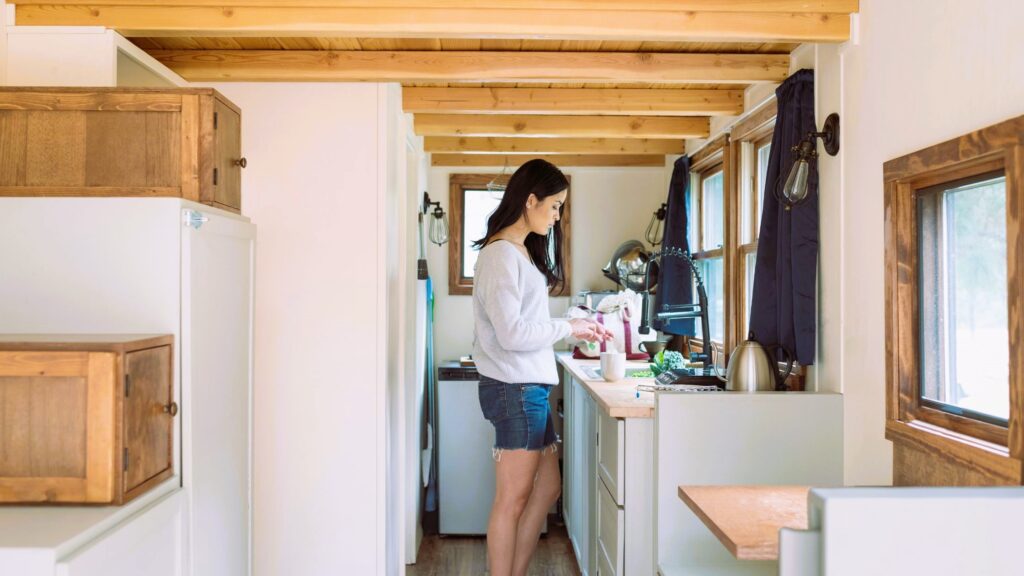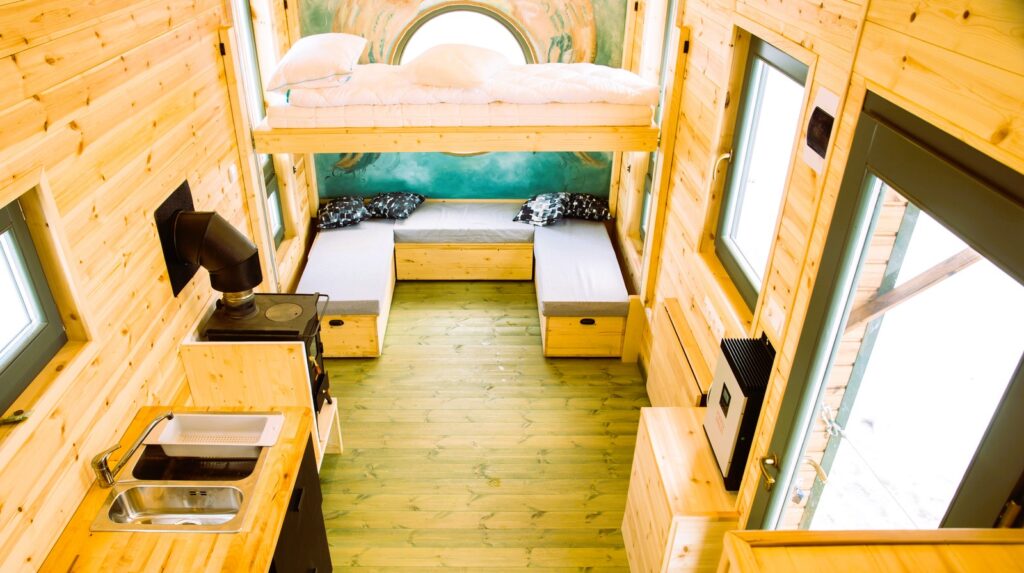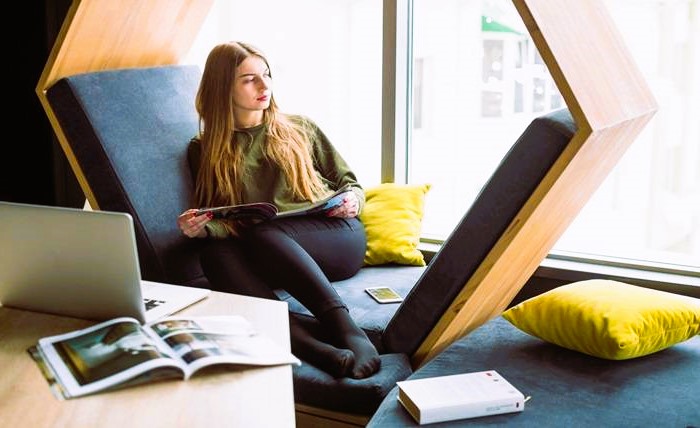Living in a small space can present both challenges and opportunities. While the limited square footage may seem restrictive, it also encourages creativity and thoughtful design solutions. In this article, we will explore a variety of creative strategies for maximizing small spaces, turning cozy homes into functional and stylish retreats.
1. Multi-Functional Furniture
Investing in multi-functional furniture is a game-changer when it comes to small spaces. Consider pieces that serve more than one purpose:
- Sofa Beds: A sofa bed provides seating during the day and transforms into a bed for overnight guests, eliminating the need for a separate guest room.
- Foldable Tables: Opt for dining tables or desks that can be folded or extended when needed and tucked away when not in use.
- Storage Ottomans: Choose ottomans with hidden storage compartments to keep living spaces clutter-free.
- Wall-Mounted Desks: Free up floor space by installing a wall-mounted desk that can be folded down when needed.
2. Smart Storage Solutions

Effective storage is essential for small spaces. Maximize every inch by incorporating smart storage solutions:
- Under-Bed Storage: Utilize the space under your bed for storage by using drawers, bins, or boxes. Consider investing in a bed with built-in storage.
- Floating Shelves: Install floating shelves on walls to display items without taking up floor space. This also creates a visually appealing, open look.
- Vertical Storage: Make use of vertical space with tall bookshelves, cabinets, or wall-mounted storage units. This draws the eye upward, creating an illusion of height.
- Storage Furniture: Choose furniture pieces that double as storage, such as coffee tables with hidden compartments or benches with built-in storage.
3. Light Colors and Mirrors
Color plays a significant role in visually expanding small spaces. Opt for light and neutral colors to create a sense of openness:
- White Walls: Painting walls in light colors, particularly white, reflects natural light and makes the space feel brighter and more spacious.
- Mirrors: Mirrors can visually double the size of a room by reflecting light and creating the illusion of depth. Consider placing mirrors strategically to enhance the overall ambiance.
- Glass Furniture: Transparent or glass furniture pieces contribute to an open and airy feel, as they don’t obstruct the visual flow of the space. Read on for our tips for successfully growing organic vegetables.
4. Smart Lighting
Well-planned lighting can enhance the perception of space and add a touch of sophistication to small homes:
- Ceiling Lights: Opt for ceiling lights that illuminate the entire room evenly. Avoid heavy or bulky fixtures that may overpower the space.
- Task Lighting: Incorporate task lighting in specific areas, such as reading nooks or workspaces, to enhance functionality.
- Floor Lamps: Choose slim and tall floor lamps that provide ample lighting without occupying valuable floor space.
5. Flexible Room Dividers
In open-concept spaces, creating defined zones is essential for functionality. Consider flexible room dividers:
- Bookshelves: Use open-backed bookshelves as room dividers to maintain an open feel while delineating separate areas.
- Curtains: Hanging curtains or sheer panels can create visual separation without the permanence of walls.
- Sliding Doors: Opt for sliding or pocket doors that can be closed when privacy is needed and opened to maximize space.
6. Foldable and Stackable Furniture
Flexibility is key in small spaces, and foldable or stackable furniture offers adaptability:
- Folding Chairs and Tables: Keep extra seating and surfaces on hand that can be easily folded and stored when not in use.
- Stackable Stools: Use stackable stools that can be tucked away in a corner or a closet when not needed.
- Nesting Tables: Nesting tables provide additional surfaces when required and can be stacked together when space is at a premium.
7. Utilize Nooks and Crannies
Small spaces often come with unique nooks and crannies that can be maximized for various purposes:
- Window Seats: Transform window sills into cozy reading nooks or additional seating with the addition of cushions and pillows.
- Alcoves: Convert alcoves into mini home offices, storage areas, or even compact sleeping spaces with the right furniture.
- Unused Corners: Make use of otherwise overlooked corners by adding corner shelves, a small desk, or a cozy armchair.
8. Portable and Collapsible Furniture

For those living in extremely tight quarters, portable and collapsible furniture offers practical solutions:
- Folding Desks: Portable desks that can be folded and stored when not in use are perfect for small apartments.
- Collapsible Dining Tables: Consider dining tables that collapse into a compact form, providing dining space only when needed.
- Rolling Carts: Rolling carts with storage can be moved around as necessary, serving as a kitchen island, a bar cart, or additional workspace.
9. Create a Cohesive Design
Maintaining a cohesive design throughout a small space contributes to a sense of harmony:
- Consistent Color Palette: Stick to a consistent color palette to create unity. This doesn’t mean everything has to be the same color, but a cohesive scheme ties the space together.
- Sized-Appropriate Furniture: Choose furniture that suits the scale of the room. Oversized furniture can overwhelm small spaces, while appropriately sized pieces maintain balance.
- Declutter Regularly: Keep surfaces and spaces uncluttered by decluttering regularly. It’s easy for small spaces to feel cramped if every available surface is covered.
10. Personalize with Smart Decor
Adding personal touches to a small space can make it feel more like home:
- Gallery Walls: Create a gallery wall with a collection of your favorite artwork or photographs. This draws the eye upward and adds personality.
- Textiles and Rugs: Use rugs and textiles to add warmth and texture. A well-chosen rug can anchor a seating area and define zones.
- Functional Decor: Choose decor items that serve a purpose, such as decorative storage boxes or baskets.
In conclusion, maximizing small spaces is about thoughtful planning, creativity, and a focus on functionality. By incorporating these creative solutions, even the coziest of homes can become well-organized, stylish, and inviting.
For more in-depth information on maximizing small spaces and design standards, you can explore reputable sources such as Canada.ca. These sources provide valuable insights into design principles, space optimization strategies, and standards for creating functional and stylish small living spaces.


